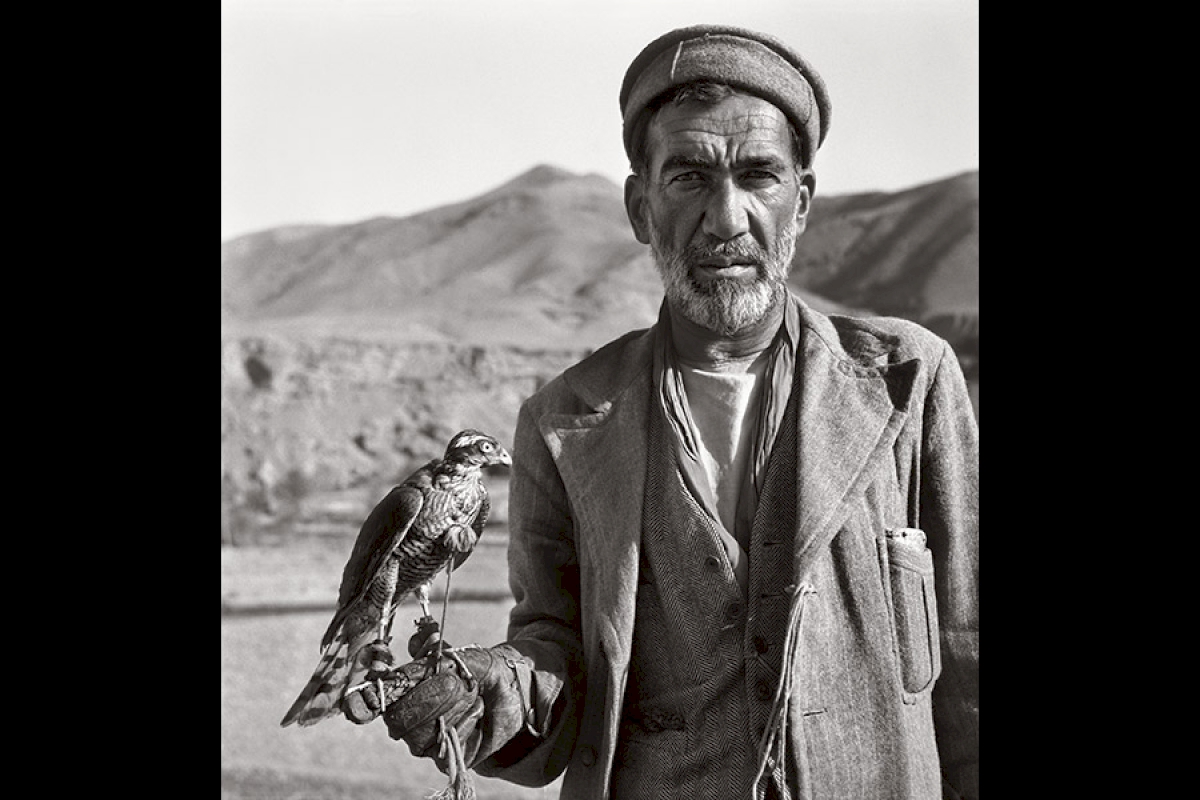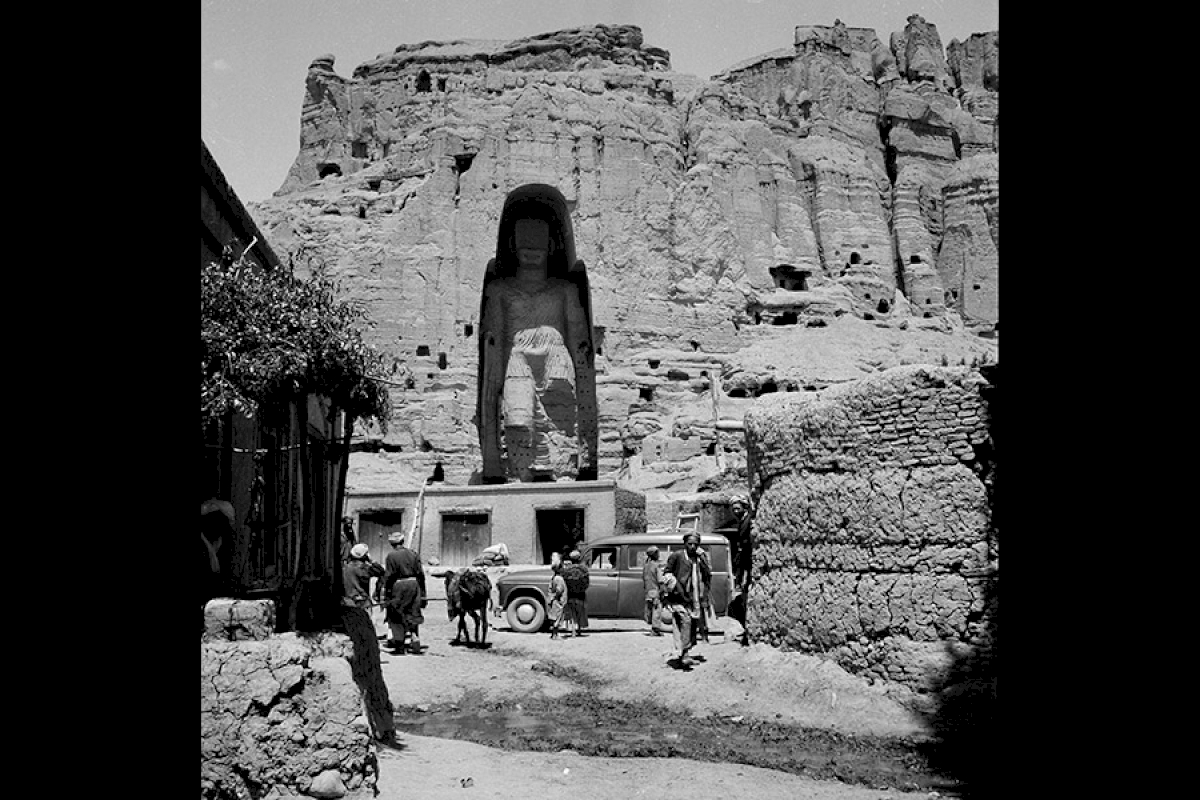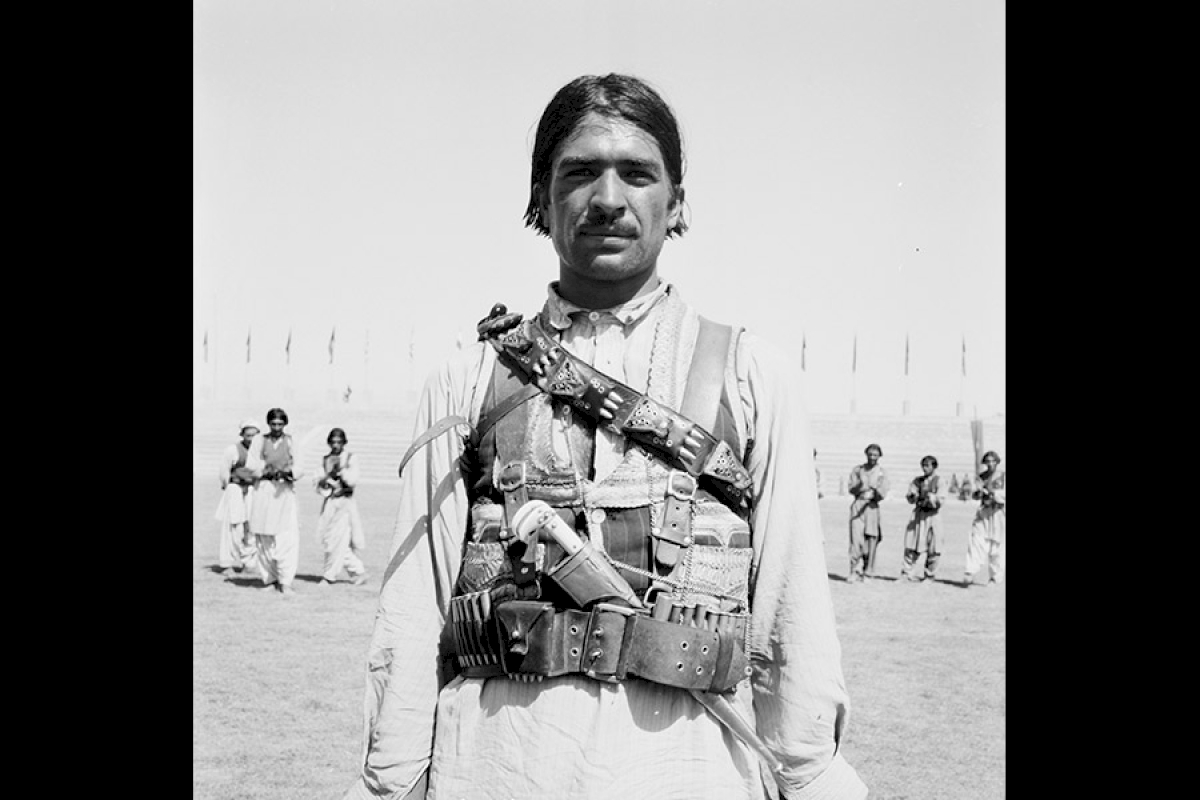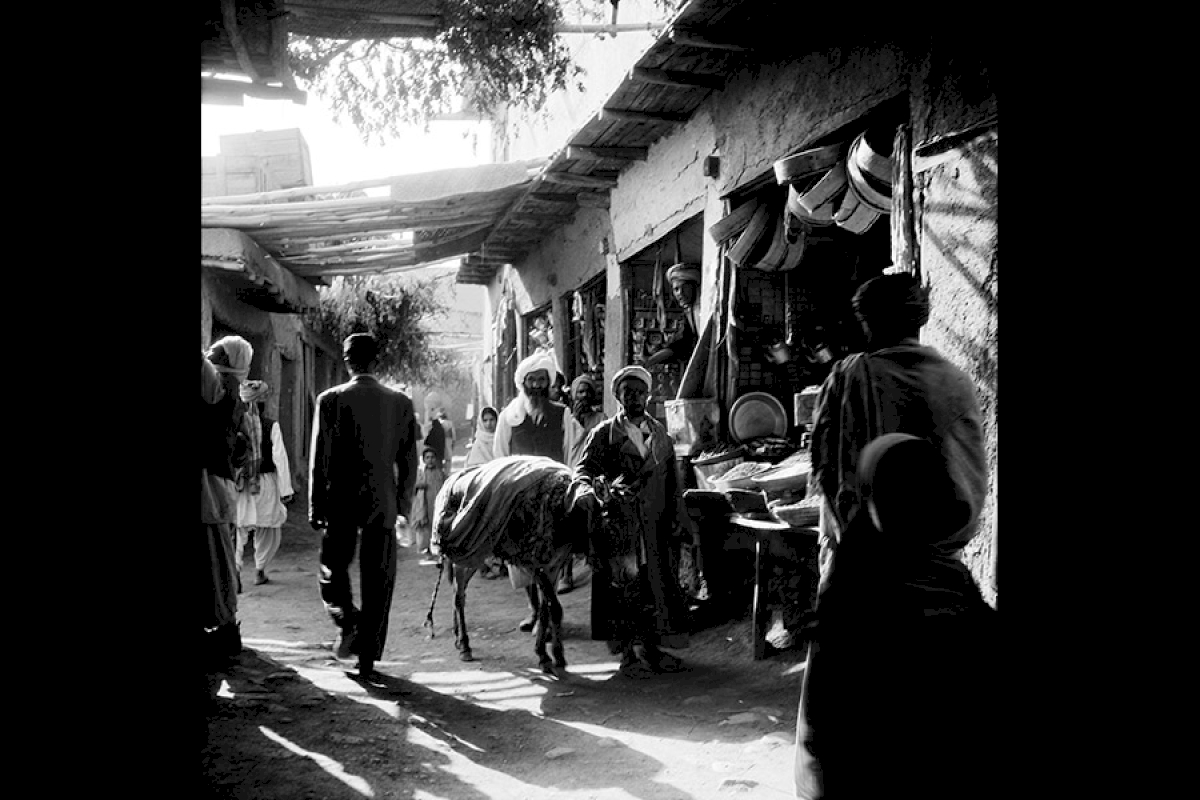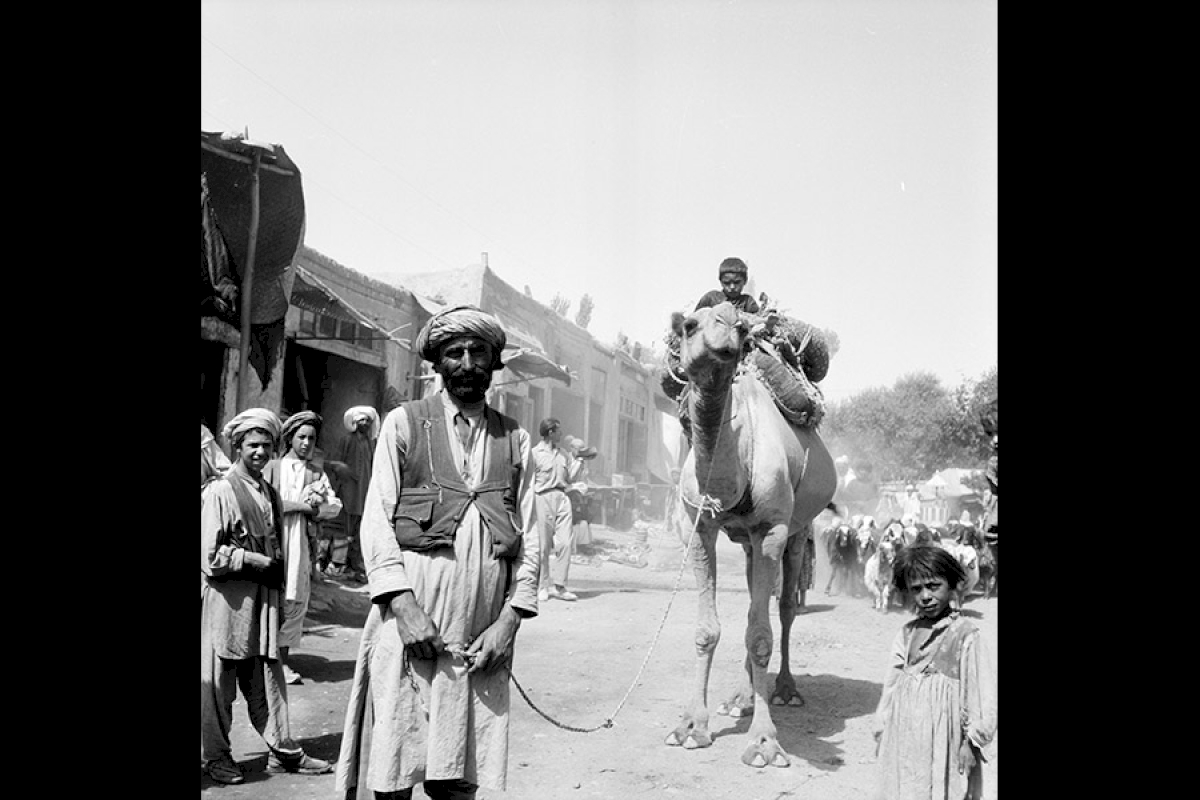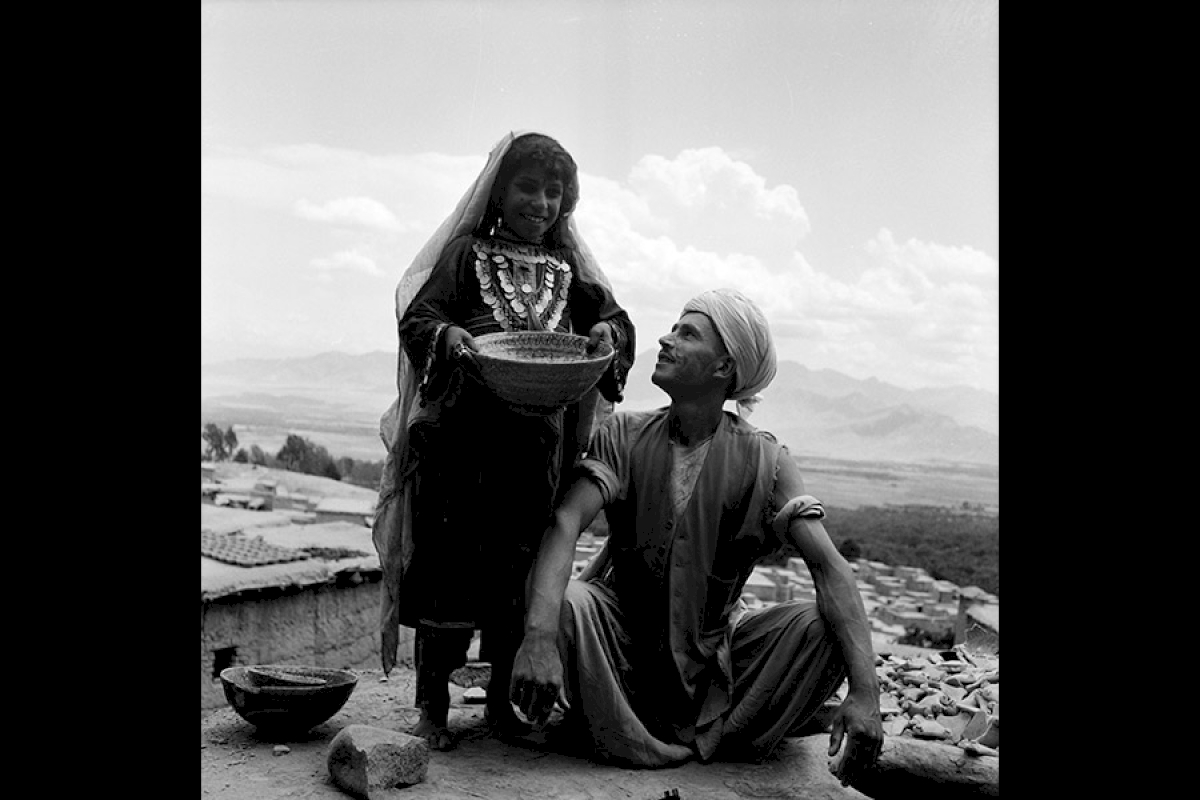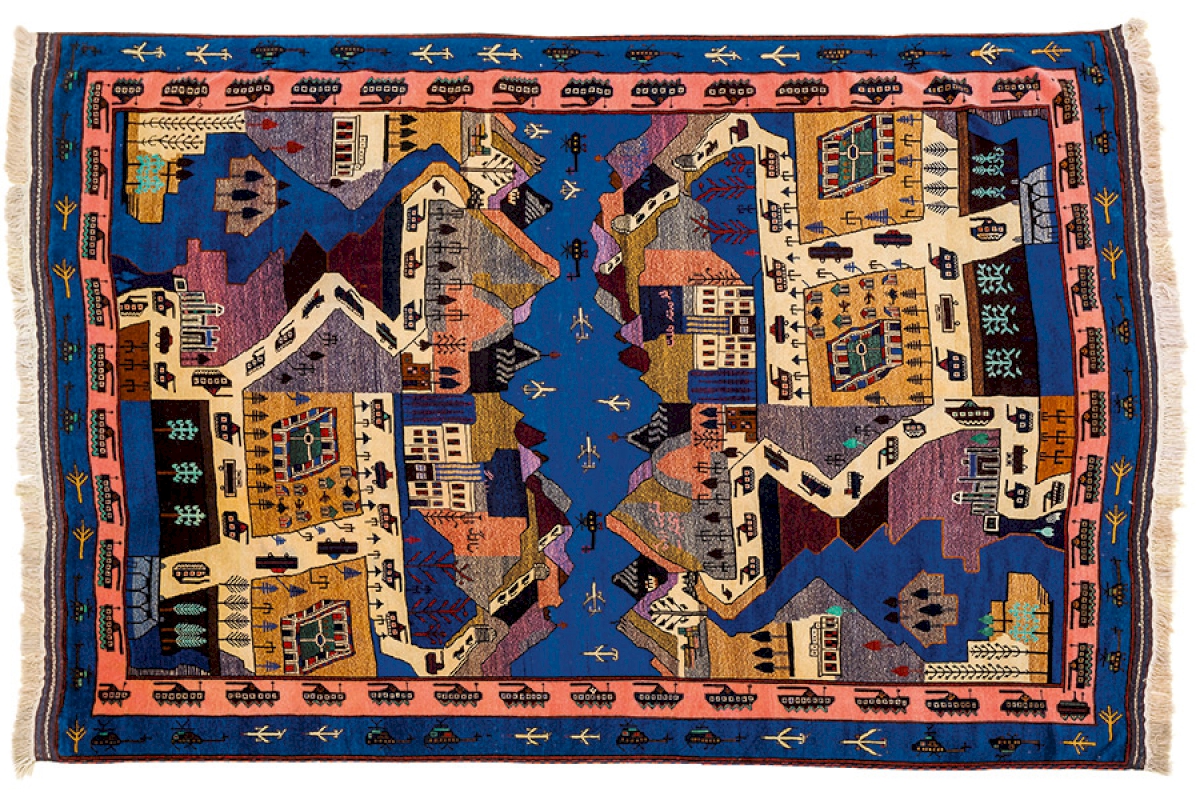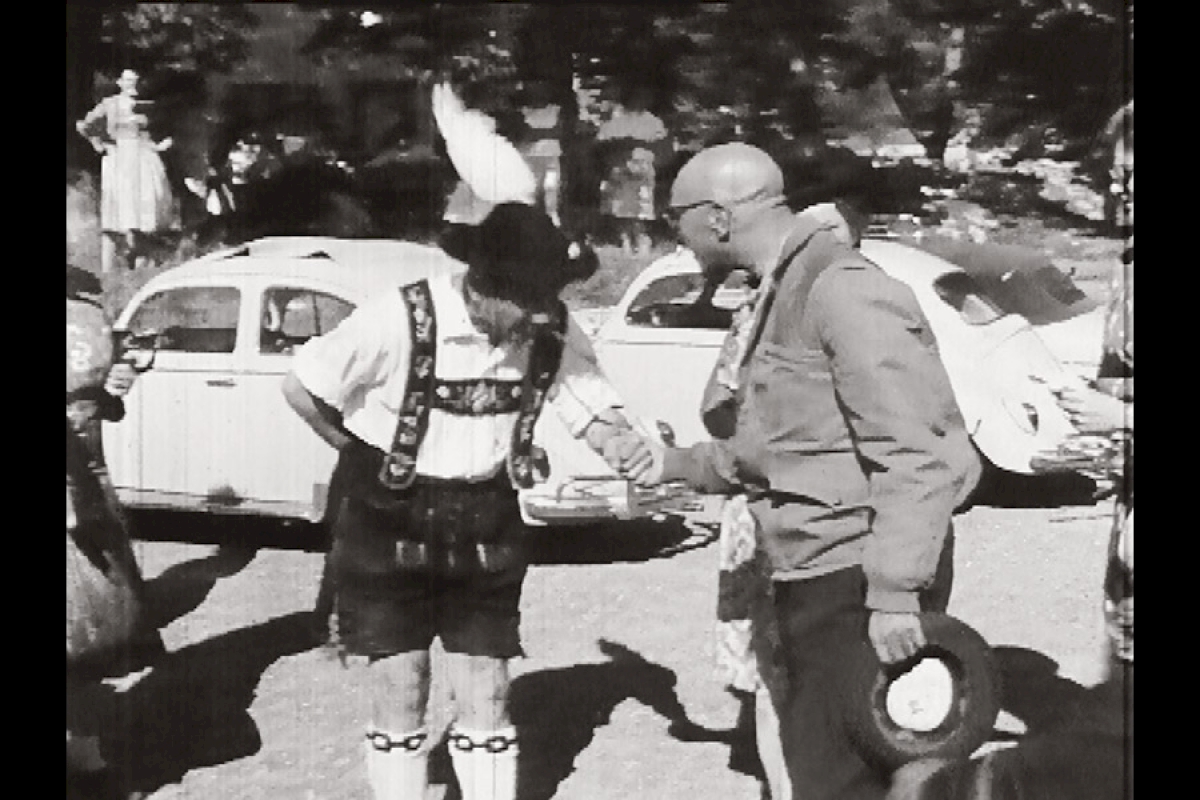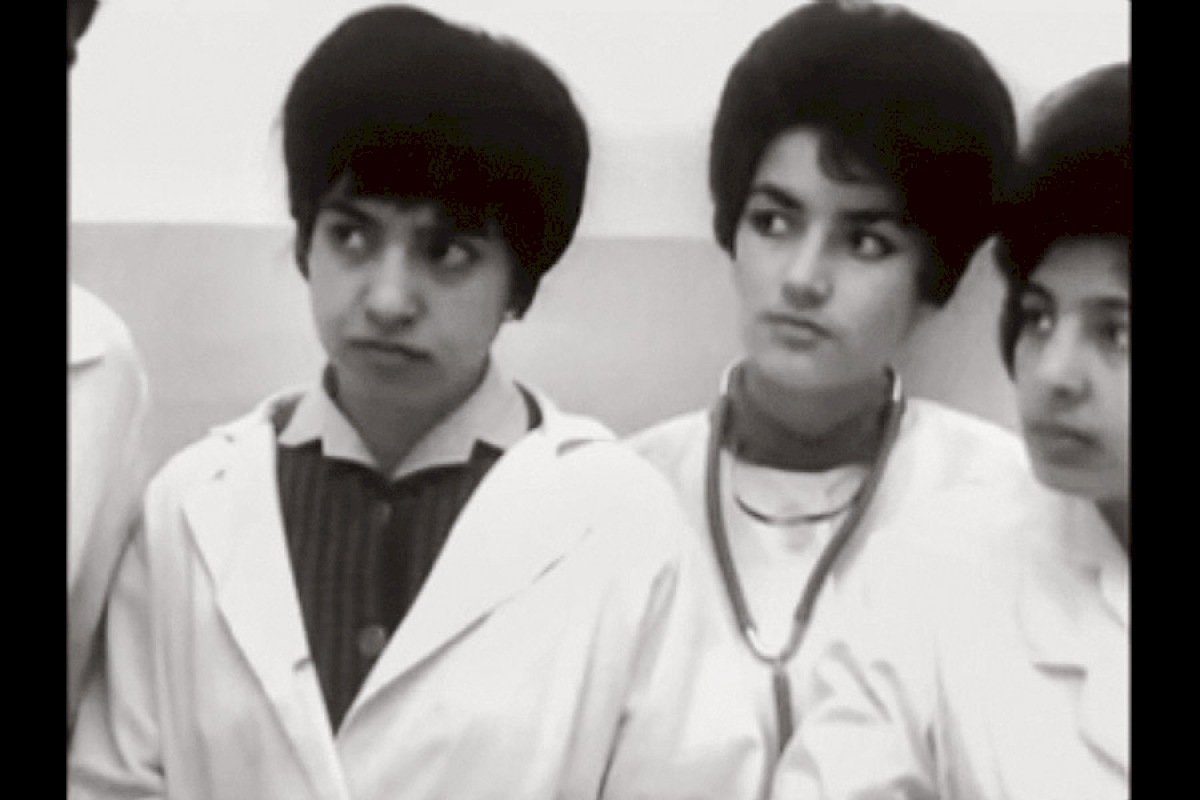GESICHTER AFGHANISTANS.
Yvonne v. Schweinitz Photographs from 1953 / Documentary films 1950-73 / War Rugs from the 1980s
13 November 2014 - 18 January 2015
GESICHTER AFGHANISTANS
For the past three decades Afghanistan has owed its place in the public mind primarily to negative headlines. Civil wars and the Taliban’s reign of terror ravaged the country. In the meantime, the focus of the global community has shifted to the terror organization ISIL, and Afghanistan has, to an extent, faded from view. The country is currently attempting to restructure itself. International combat units – including 1,800 Bundeswehr soldiers under ISAF command – will be on the ground until the end of 2014 to safeguard and support the transition process.
At this important juncture in Afghan – and world – history, the Kunstfoyer provides a glimpse of another, nearly forgotten Afghanistan. Titled “The Many Faces of Afghanistan,” the exhibition recapitulates the history and riches that provide the foundation upon which the country must now be rebuilt. For this is not the first time Afghanistan has sought access to the modern age – it did so during the 60s and 70s, as well. Four subject areas representing four quite diverse media (photography, documentary films, war rugs, and “towers of knowledge”) articulate a most difficult undertaking. The aim is to again make visible the multifaceted country’s heritage, which the Taliban deliberately set out to eradicate.
Yvonne von Schweinitz: Experiencing an ancient world. Photographs from 1953
Now a resident of Essen, Yvonne von Schweinitz returned from her journey through Afghanistan in 1953 with many unique photographs, and a selection of 120 of these can now be viewed at the Kunstfoyer. With her camera she captured impressive characters from various ethnic groups and their living conditions while traveling for three months through Afghanistan in the company of Swiss journalist Hans von Meiss-Teuffen. People and monuments – like the Buddha statues of Bamiyan (UNESCO World Heritage Site) destroyed by the Taliban in 2001 – serve to illustrate the traditions that these Islamic fundamentalists set out to erase from the nation’s cultural memory. These photographs from the past can make an important contribution towards the emergence of a new and open national identity.
Documentary films of the 1950s – 1970s: Digitalization by Afghan Film
Newsreels from the 50s – 70s provide information about the modernization then taking place in the country. During this period Afghanistan was ruled by a king, and the country enjoyed close ties with Germany. In retrospect this period of constitutional monarchy (1963–73) is viewed as something of a golden age. The moving pictures from the past are valuable documents that help preserve the country’s cultural memory. 30,000 minutes of film still await digitalization in decaying film cans. “With their help, we want to show how Afghanistan could be, had the fundamentalists not come to power.” (Ibrahim Arify, Afghan Film).
War Rugs from the 1980s
A collection of rugs on loan from the Five Continents Museum in Munich, “War Rugs” feature an aesthetic of war and weaponry and tell the story of the utterly chaotic conditions prevalent in the 80s. Among the nomads and peasants of Afghanistan, hand-woven rugs were traditionally adorned with geometric and floral patterns as well as occasional figural representations. But in the wake of the Soviet invasion, these were replaced by motifs of war in the early 80s: tanks, fighter-bombers, attack helicopters, rockets, and machine guns.
“Towers of Knowledge” for Schools and Universities in Afghanistan
Collectively, the five “Towers of Knowledge” seek to provide a historical and, above all, socio-cultural foundation by way of words and images. Presented in a didactically optimal manner, these towers of information are also used in Afghanistan’s schools and universities. The material for the Munich exhibition was provided by the Bibliotheca Afghanica of the Swiss Afghanistan Institute
The exhibition of Yvonne von Schweinitz’s Afghanistan photographs is a project of Claus Friede*Contemporary Art in conjunction with Marcard Pro Arte & VV GmbH, Hamburg. It was previously shown at the Handelskammer Hamburg and the Willy-Brandt-Haus, Berlin, as well as at the Museum für Kunst und Kulturgeschichte, Dortmund.
At the Kunstfoyer, the project was expanded to include three additional major subject areas: the war rug collection (selection) from the Five Continents Museum in Munich; documentary films from the archives of Afghan Film, Kabul; and the so-called “Towers of Knowledge” on loan from the Stiftung Bibliotheca Afghanica, Bubendorf (Switzerland).
All texts in the exhibition are bilingual: German and Dari.

